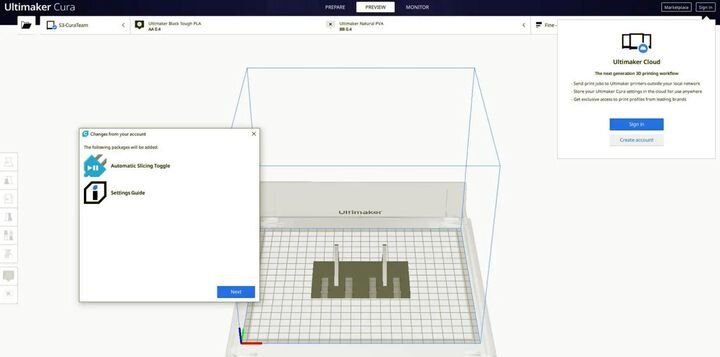![Screenshot from Ultimaker Cura [Source: Ultimaker]](https://fabbaloo.com/wp-content/uploads/2020/05/image-asset_img_5eb05084832d5.jpg)
Ultimaker announced some surprising statistics for use of Ultimaker Cura.
Ultimaker Cura is the software used to drive their fleet of 3D printers. It’s been in existence for quite a few years now, and has undergone numerous upgrades. Today it’s seen as one of the more powerful and easy to use 3D print job preparation tools.
Ultimaker’s software team constantly updates the tool, often adding powerful new features. These usually appear in the “Experimental” section until they are proven to be usable for general users.
The company has taken a very open stance on this tool. From the very beginning it has been distributed as an open source tool, and as such has been adopted by many other 3D printer manufacturers as their dedicated slicing system. Vendors will usually bundle Ultimaker Cura with their equipment, along with a set of appropriate print profiles for their gear.
Alternatively, some 3D printer manufacturers will take the open source code and make some modifications to account for their unusual hardware, resulting in a slightly different product based on Ultimaker Cura.
Perhaps the most notable change that’s occurred during the lifetime of the software is that its name changed. Originally it was simply known as “Cura”, and in fact many people still refer to it as that. However, a couple of years ago Ultimaker renamed the product to “Ultimaker Cura”. It’s not clear why they did so, but I suspect it is to remind all the non-Ultimaker users of the tool that it original with Ultimaker. Free advertising, if you will.
The result of all this is that there are countless users of Ultimaker across the globe, each using the software for both Ultimaker and non-Ultimaker equipment.
This week Ultimaker announced some interesting statistics.
They say that the entire popular of Ultimaker Cura users now slices approximately 2M 3D print jobs per week — or over 100M per year. That’s enormous, and demonstrates the popularity of the tool.
They also say that there are now more than 600K active users per month, which is quite significant. At a minimum, that says there are likely far more than 600K active 3D printers in the world today. When you combine the non-Ultimaker Cura users of tools like Simplify3D, Slic3r, PrusaSlicer and all the other machine-dedicated tools, there must be more than a million active 3D printers today.
There’s one thing you might not realize: ask yourself how Ultimaker knows these statistics.
It turns out that each installation of Ultimaker Cura is actually reporting back to headquarters with (presumably) anonymized data about your slicing operations. Ultimaker then tallies up the numbers to track what’s going on.
Because of this incredibly wide view of the data, I suspect Ultimaker has a very good perspective on the current state of affairs in the world of 3D printing. I can imagine all manner of analyses that could be done with this information, and it’s possible Ultimaker is doing the same.
Regardless, Ultimaker Cura is an outstanding product that will continue to be used by all Ultimaker operators and the 3D printing community at large.
Via Ultimaker

